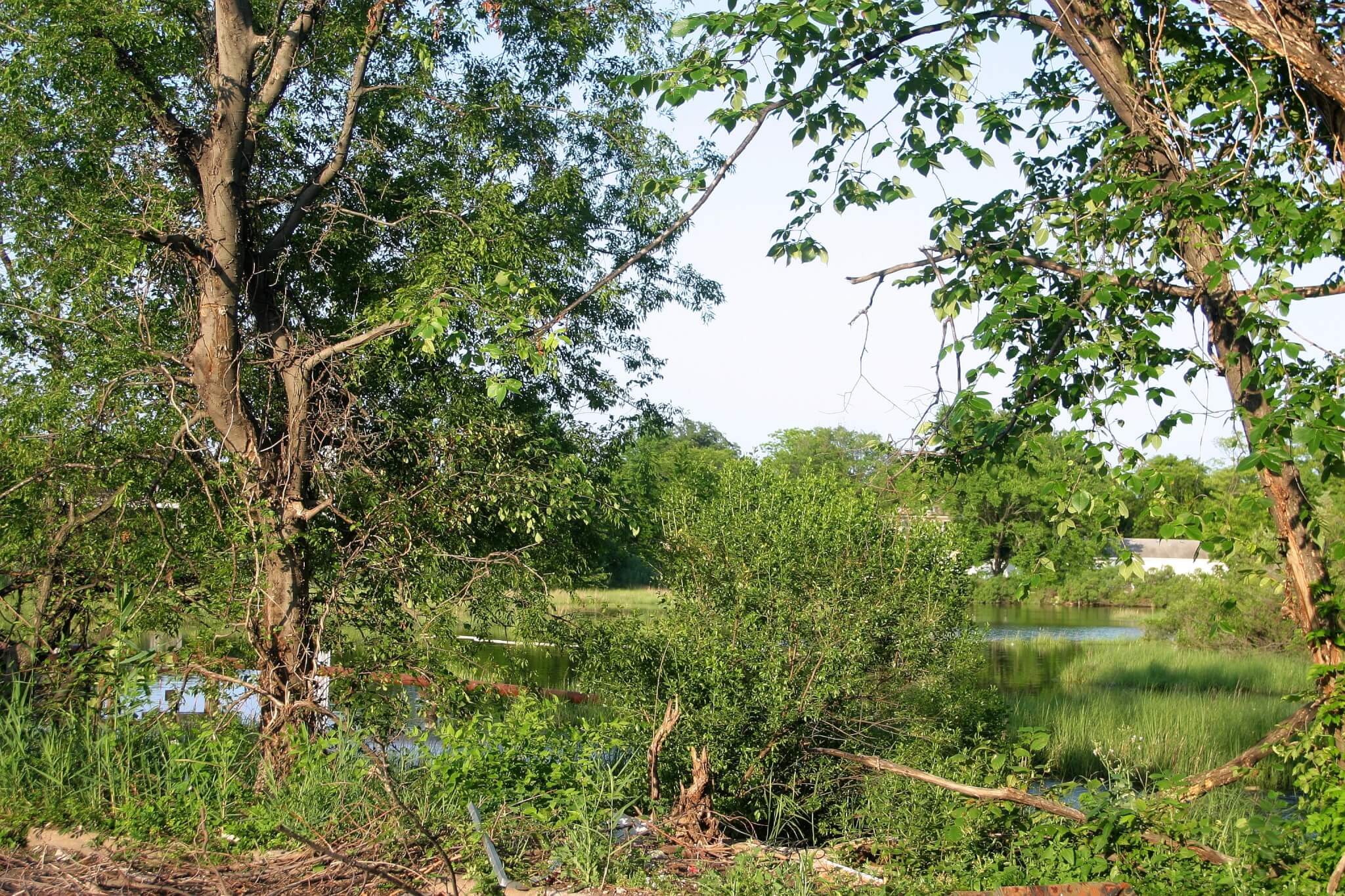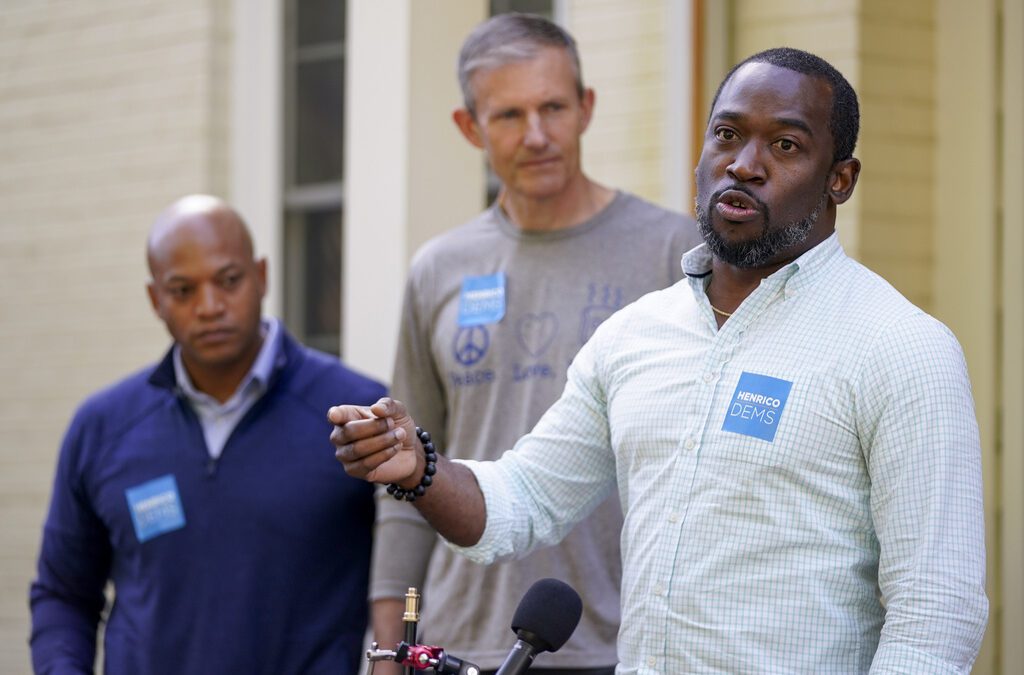
A Virginia wetland | Photo by Karl Callwood on Unsplash
Virginia Farm Bureau says decision will remove unnecessary layer of bureaucracy for farmers
by Charlie Paullin, Virginia Mercury
Following a ruling from the U.S. Supreme Court that narrows environmental protections for wetlands, environmental groups say there will be little change in Virginia because of the state’s strong wetlands regulations.
“Theoretically, Virginia has stronger water quality protection than the federal government,” said Peggy Sanner, Virginia director of the Chesapeake Bay Foundation. Under Virginia wetlands laws and regulations, she said, the state “should be able to continue to protect all the waters of the state, including those that may not be in the federal protections.”
On May 25, the U.S. Supreme Court ruled in a case known as Sackett v. U.S. Environmental Protection Agency that the wetlands protections in the Clean Water Act apply only to bodies of water with a “continuous surface connection” to larger navigable water bodies, a decision that will greatly reduce the number of wetlands the government can protect.
Previously, wetlands connected to larger bodies through groundwater and intermittent bodies of water that might dry up during portions of the year were protected under the law, which regulates pollution discharges into the nation’s waters.
The case was brought by the Sackett family in Idaho, who argued they shouldn’t have to obtain an EPA permit to build a house on their property. The EPA had said a permit was necessary because water from the land would run into a ditch that fed into a creek, which fed into a navigable lake.
The family challenged the decision and, after an initial loss in the U.S. Ninth Circuit Court of Appeals, won its case in the nation’s highest court.
“The wetlands on the Sacketts’ property are distinguishable from any possibly covered waters,” Justice Samuel Alito wrote in the majority opinion.
Wetlands are areas where water covers soil and are broadly understood to encompass swamps, bogs and marshes, as well as areas around creeks, rivers, lakes and ponds. They are seen as critical habitats for diverse species of wildlife. Wetlands are also seen as a critical tool to filter out pollutants from reaching larger bodies of water like the Chesapeake Bay, as well as to absorb flooding from sea level rise and stormwater surge before communities are damaged.
While the federal government regulates disturbances of wetlands through the U.S. Army Corps of Engineers, the Clean Water Act also gave states the power to impose their own rules for wetlands.
Virginia has its own set of laws under the Department of Environmental Quality and Virginia Marine Resources Commission for wetland protections, established by the Tidal Wetlands Act of 1972 and the Virginia Nontidal Wetlands Act. As the names imply, the Tidal Wetlands Act applies to wetlands in more coastal areas, whereas the Nontidal Wetlands Act applies to inland waters.
DEQ spokesperson Aaron Proctor said the agency is still reviewing the Sackett decision and declined to comment on how it could impact Virginia’s regulations.
Several Virginia environmental groups, however, said strict state laws and regulations will continue to protect Virginia’s wetlands.
The laws require permits for any action that impacts wetlands and mandate that there must be “no net loss” of the resource, explained Chesapeake Bay Foundation Virginia Director Peggy Sanner. To avoid or minimize any loss, permits from DEQ that allow disturbances to wetlands “shall contain requirements for compensating impacts,” which may include requirements to build new wetlands, buy credits from wetland restorers or pay into a fund that is used to restore wetlands, Sanner added.
Virginia’s regulations “made a very strong protection for our waterways where you have the federal government and the state government acting together,” Sanner said. “When you have one of those partners, for whatever reason, bow out, that’s a cause for concern.”
Mary-Carson Stiff of environmental nonprofit Wetlands Watch said that while the impact of the Supreme Court decision on traditional tidal waters isn’t as much of a concern because surface water connections between bodies of water are more easily distinguishable, the effect on non-tidal waters could be greater because of climate change.
With sea level rise, waters from one ditch may jump a road or a floodwall to another land area, explained Stiff, making the new ditch a wetland through a process known as wetland migration. At the same time, coastal areas are experiencing coastal squeeze, which is the result of rising sea levels pushing coastlines inland.
“From a climate change standpoint and sea level rise adaptation standpoint that’s focused on natural resource conservation and shoreline ecosystem survival, this is bad news,” Stiff said of the Sackett ruling.
Wetlands also have an impact on other wetlands that may be further downstream or disconnected on the surface but still connected through groundwater, Stiff said.
“If anything happens to our laws in Virginia to weaken our ability to call the wetlands on the other side of the road wetlands, we won’t have a fighting chance to do the appropriate amount of wetlands migration that needs to happen so we have wetlands under sea level rise,” Stiff said.
Concerns about the ruling’s impact on areas experiencing sea level rise were also raised by Supreme Court Justice Brett Kavanaugh in his concurring opinion.
“Federal protection of the Chesapeake Bay might be less effective if fill can be dumped into wetlands that are adjacent to (but not adjoining) the bay and its covered tributaries,” Kavanaugh wrote, calling the new interpretation an “overly narrow view of the Clean Water Act.”
But while environmental groups are expressing some concern over Sackett’s effect on wetland protection, the Virginia Farm Bureau Federation has praised the ruling as a necessary reduction of bureaucracy for farmers.
Prior to the Sackett ruling, if a farmer wanted to dig a ditch in his or her field to drain flood waters from a serious storm, the EPA would need to issue a permit for the work in addition to state approval, said Virginia Farm Bureau Vice President of Government Relations Martha Moore.
“We’re very happy with the Sackett ruling. For us it provides clarity for farmers that don’t require a team of attorneys to try and figure out,” Moore said. “Virginia already has the Chesapeake Preservation Act and you can’t do anything in those zones. We already have conservation practices, we already encourage the development of wetland mitigation banks. I feel like Virginia already has those protections, and this just added another layer of bureaucracy that you don’t really need.”
Virginia Mercury is part of States Newsroom, a network of news bureaus supported by grants and a coalition of donors as a 501c(3) public charity. Virginia Mercury maintains editorial independence. Contact Editor Sarah Vogelsong for questions: [email protected]. Follow Virginia Mercury on Facebook and Twitter.
Politics

Biden administration bans noncompete clauses for workers
The Federal Trade Commission (FTC) voted on Tuesday to ban noncompete agreements—those pesky clauses that employers often force their workers to...

Democratic shakeup in Virginia primaries for governor, lieutenant governor
Richmond Mayor Levar Stoney quit his bid for governor and jumped into the race to be the Democratic nominee for lieutenant governor. The race for...
Local News

The zodiac signs of 12 iconic women offer insight into their historic accomplishments
Zodiac signs can tell you a lot about someone’s personality. Whether they’re an earth, water, air, or fire sign, these 12 categories (which are...

Virginia verses: Celebrating 5 poetic icons for National Poetry Month
There’s no shortage of great writers when it comes to our commonwealth. From the haunting verses of Edgar Allan Poe, who found solace in Richmond's...





